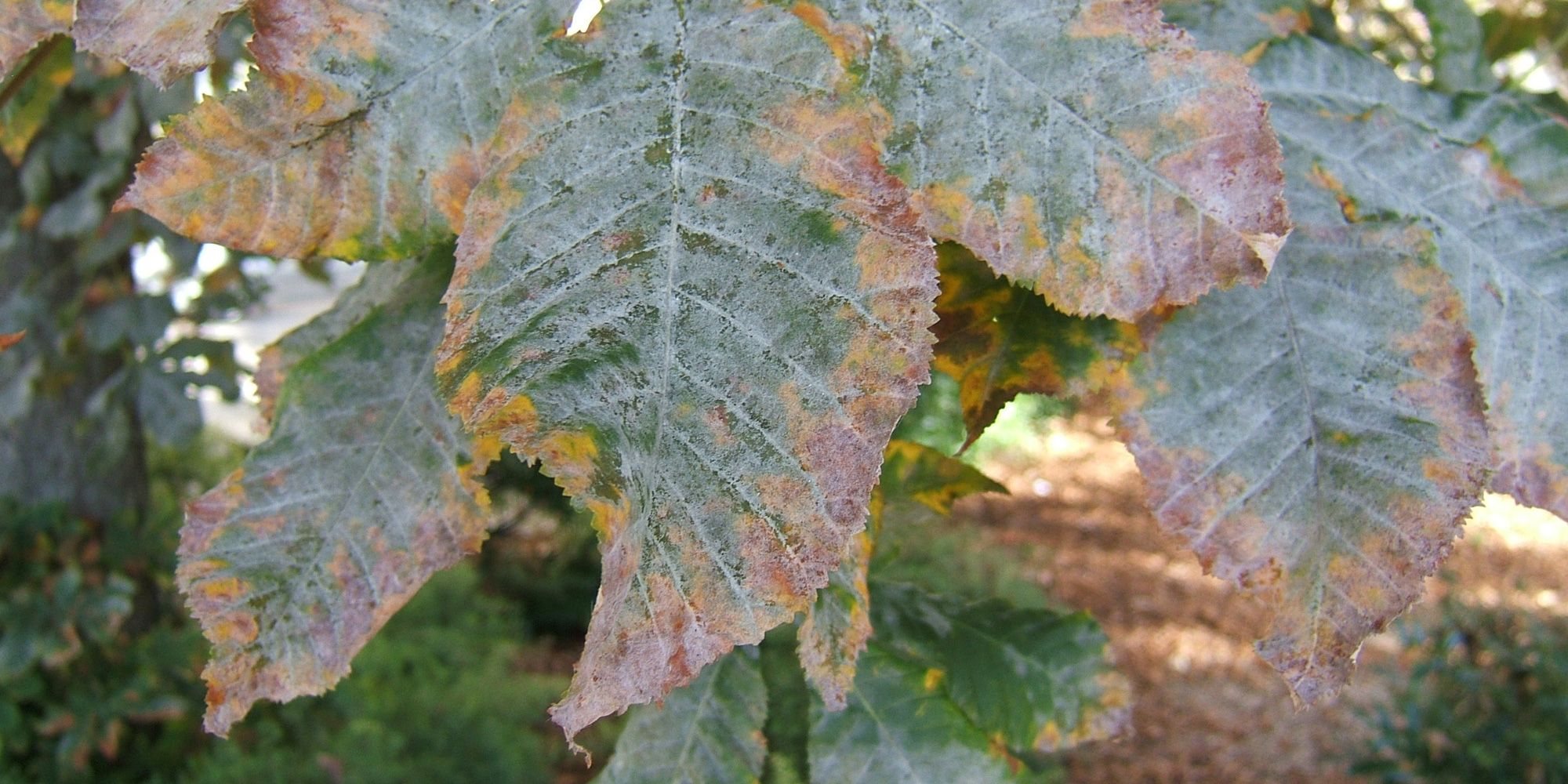Trees in the inner-city area, especially street trees, generally have only a limited space available to live. Above all, the compacted and sealed root area has a lasting effect on the vitality of the trees. Mechanical injuries are often added, which facilitate entry for wood-destroying fungi. Damage to trees is also caused by road salt, natural gas and dog urine. Weakened and already damaged trees are particularly susceptible to diseases and pests.
From the large number of pests in Berlin trees, here are a few examples:
- Almost annually, above all, large-leaved lime trees are infested by spider mites. Hot and dry years facilitate their reproduction. Infested trees already have yellowing leaves in the lower crown area in June. In case of severe infestation, this can continue upwards into the crown. Progressing browning and drying of the leaves occurs, which leads to early leaf fall.
- Aphids are found particularly on young leaves and shoots. In dry and hot years, lime trees are increasingly infested with aphids. The sticky excretions of the aphids, the so-called honeydew, are in turn the basic food resource for sooty mould fungi, identifiable by blackened leaves. Gummy and dirty areas under lime trees, often also found on cars, are a less popular after-effect.
- The leaf scorch or leaf nerve disease of plane trees is due to a fungus (Apiognomonia veneta), which causes brown leaf spot along the leaf veins. If infected, the young buds already wilt and dry out in the spring, scaffold branches are not infested.
- The horse chestnut leaf miner (Cameraria ohridella), an insect that was first discovered in Macedonia in 1985, was found in Berlin for the first time in 1998. It mostly infects white blossoming horse chestnuts. The larvae of the horse chestnut leaf minor destroy the inside of the leaves through their feeding activity, which can be identified outwardly by light brown flecking. Severe infestation causes premature leaf fall. Infestation over multiple years leads to weakening of the tree.
- The horse chestnut scale (Pulvinaria regalis) is one of the sap-sucking harmful organisms; it was first determined in Berlin in 2000. The larvae of the pest settle on leaves and branches where they suck the plant sap. The horse chestnut scale prefers lime and horse chestnut trees in particular and is identified by the cotton wool-like, white formation on the trunk, which also forms on the branches in case of severe infestation.
- The decomposer parasite on plane trees (Splanchnonema platani) that belongs to the sac fungi causes rapid dying of branches. This disease, known as Massaria was first found in Germany in 2003 after a hot and particularly dry summer. Larger branches with low vitality can also become infested and rapidly become wholly or partly dead. Wide, slightly violet to light reddish-coloured bark areas of the upper side of the branch are a sign of infestation. Dark fungal spores later turn these areas into a black spotty colour. Rapidly advancing wood rot occurs in the tissue of the upper side of the branch. As the underside is not yet infested, the branch continues to be leafy. Fully foliate and until then inconspicuous thicker branches can die within several weeks and become a hazard.
- The common mistletoe (European mistletoe, Viscum album) grows as an evergreen hemiparasite on the branches of certain host trees and over the years can form bushes up to one metre in diameter. The seeds of the mistletoe are propagated by birds, for which they represent an important part of their winter food. In studies undertaken in the Steglitz-Zehlendorf area since 1987, Berlin’s Plant Protection Agency has recorded an increase in the occurrence of European mistletoe. The diverse adverse effects in the street location weaken the trees and make them susceptible to settlement with mistletoe.

